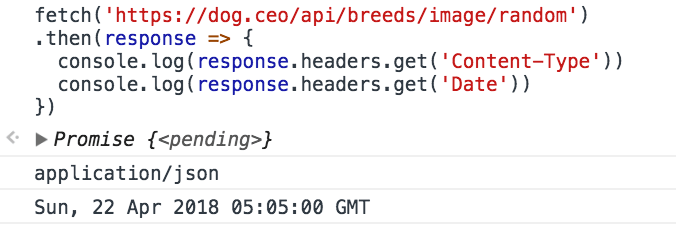The Response Object returned by a fetch() call contains all the information about the request and the response of the network request.
Metadata
headers
Accessing the headers property on the response object gives you the ability to look into the HTTP headers returned by the request:
fetch('./file.json').then(response => {
console.log(response.headers.get('Content-Type'))
console.log(response.headers.get('Date'))
})

status
This property is an integer number representing the HTTP response status.
- 101, 204, 205, or 304 is a null body status
- 200 to 299, inclusive, is an OK status (success)
- 301, 302, 303, 307, or 308 is a redirect
fetch('./file.json').then(response => console.log(response.status))
statusText
statusText is a property representing the status message of the response. If the request is successful, the status is OK.
fetch('./file.json').then(response => console.log(response.statusText))
url
url represents the full URL of the property that we fetched.
fetch('./file.json').then(response => console.log(response.url))
Lessons in this unit:
| 0: | Introduction |
| 1: | How to use Fetch |
| 2: | Catching errors in network requests |
| 3: | ▶︎ The Response object |
| 4: | Getting the body content |
| 5: | The Request object |
| 6: | Request headers |
| 7: | POST requests |